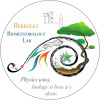Reports
Contents
| Title: | Bouldin Alfalfa - NDVI (SRS, Apogee, Arable, Planet) | ||||||||||||||||||||||||||||
| Date: | 2017-06-06 - 2021-04-24 | ||||||||||||||||||||||||||||
| Data File: | BA_NDVI.csv | ||||||||||||||||||||||||||||
| Refers to: | BA,877203409,882103021,1049,1050,C002469,C003240 | ||||||||||||||||||||||||||||
|
Various sensors measuring NDVI have been installed across the Delta sites over the last several years. At some sites, the SRS sensors from Decagon/METER have been drifting low, so I wanted to compare them with other NDVI measurements.
For some sites with I also compared GCC with the various NDVI values to see how much GCC values varied year over year. Photos were taken by a variety of cameras: Netcam Stardot cameras (the official camera of the Phenocam Network®), Canon point-and-shoot cameras with custom firmware, or a Raspberry Pi camera. I used Joe's datafetch tool to calculate daily average mid-day values of NDVI and GCC from the various sensors. Mid-day values included data from 11:00 to 13:00, 5 values a day. I despiked the data in Excel.
See reports for other Delta sites here: East Pond / Sherman Wetland Temp Tower (both sites had same set of SRS sensors) Twitchell Alfalfa / Sherman Barn (both sites had same set of SRS sensors) Â
 Figure 1. Bouldin Alfalfa data. SRS sensor here did not seem to decay over the last few years. The general trends of NDVI from the SRS, Arable, and Apogee sensors match well, although the peak NDVI from Arable, Apogee, and PL data are all around 0.8, whereas the peak NDVI from the SRS sensors is around 0.7. higher than the SRS data. The Arable data seems noisier than the others in late 2020.  Figure 2. Linear regression of BA data. The SRS and Apogee sensors are a tight fit with R2=0.98. There is more noise in the Arable and PL regressions with R2=0.74 and R2=0.81, respectively.  Figure 3. Incoming Red bands from SRS, Apogee, and Arable sensors. Values match well, although Arable data is a little lower.  Figure 4. Incoming NIR bands from SRS, Apogee, and Arable sensors. Values match well, although again Arable data is a little lower.  Figure 5. Outgoing Red bands from SRS, Apogee, and Arable sensors. SRS values are higher than Apogee and Arable.  Figure 6. Outgoing NIR bands from SRS, Apogee, and Arable sensors. Apogee and SRS data match, but Arable values are a little lower.  Figure 7. Red reflectance from SRS, Apogee, Arable, and PL data. SRS values are higher, but overall trends match.  Figure 8. NIR reflectance from SRS, Apogee, Arable, and PL data. Overall trends match, but Arable values are a little lower.    Figure 9. Linear regression of NDVI data against GCC data. The Apogee NDVI has the best fit at R2=0.82, but it also has the last number of points (9 months). Just curious how well the GCC data can predict NDVI. |
|||||||||||||||||||||||||||||
| |

